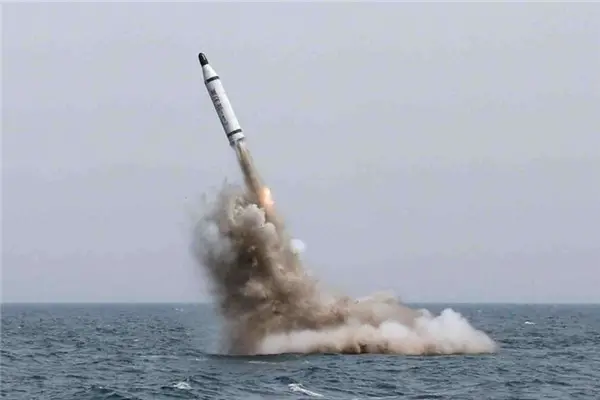DPRK’s submarine-launched ballistic missile (SLBM) is capable of reaching any target in South Korea if it is mounted with a one-tonne nuclear warhead, according to foreign missile experts.
The claim was made in a report published in the December edition of Korea Observer, a scholarly journal published quarterly by the Institute of Korean Studies.
In the report titled “DPRK's Ballistic Missile Programme,” Theodore Postol, a professor emeritus at MIT, and Markus Schiller, an aerospace engineer at the Munich-based ST Analytics, said the DPRK’s SLBM, called KN-11, is believed to have a range of 600km or more if it is armed with a one-tonne nuclear warhead. This puts all of South Korea within range of the missile in theory.
The experts also noted the possibility that the missile with a one-tonne warhead may have a range of 800km, though more details are necessary to determine the maximum range of the missile.
They added that the missile with a 1.5-tonne warhead may have a range of 450km.
“This means that when the KN-11 is eventually deployed on diesel-electric submarines, it will almost certainly have the payload and range to carry a heavy first-generation nuclear warhead designed for ballistic missile delivery from large areas of the ocean,” the report said.
The report added that once the deployment is done, missile defence systems such as the US Terminal High Altitude Area Defense (THAAD), which is scheduled to be deployed in South Korea this year, would not be able to readily engage such an “all azimuth” SLBM as it is mostly designed to shoot down DPRK'smissiles fired from a relatively well-defined direction from the DPRK.
The report comes at a time when military officials here assess that the DPRK’s technology to miniaturise nuclear warheads has reached a “considerable” level.
They note that if a country miniaturises a nuclear warhead to about one-tonne in weight and 90 centimeters in diameter, the development is considered a success.
Pyongyang is known to have been working to reduce the weight of its nuclear warheads to less than 700kg so it can fit them on its various ballistic missiles.
The weight of the warhead for the DPRK’s short-range Scud missile is about 770 to 1,000kg, while the medium-range Rodong missile can carry a 700kg warhead and the intermediate-range Musudan a 650kg warhead, according to the Ministry of National Defence.
The ministry assesses that the DPRK has yet to perfect such technology, though some military experts claim Pyongyang has already reached that goal.
The isolated state also appears to have been advancing its SLBM technologies last year, during which it test-fired three SLBMs in April, July and August.
In the third test, the SLBM flew about 500km and splashed down in waters within Japan’s Air Defence Identification Zone (JADIZ) in the East Sea, showing significant improvement from past tests.
Thae Yong-ho, the former DPRK'sdeputy ambassador to London who defected to the South in August, recently said DPRK leader Kim Jong-un is determined to complete the development of his nuclear weapons by the end of this year.
In his verbal New Year’s message broadcast on state-run TV, Sunday, Kim claimed the country is in the final preparatory stages for test-firing an intercontinental ballistic missile (ICBM) capable of carrying a nuclear warhead.
The DPRK’s KN-08 road-mobile ICBM with a range of more than 10,000km is capable, in theory, of hitting targets on the US mainland.
(KOREA TIMES)
 简体中文
简体中文



